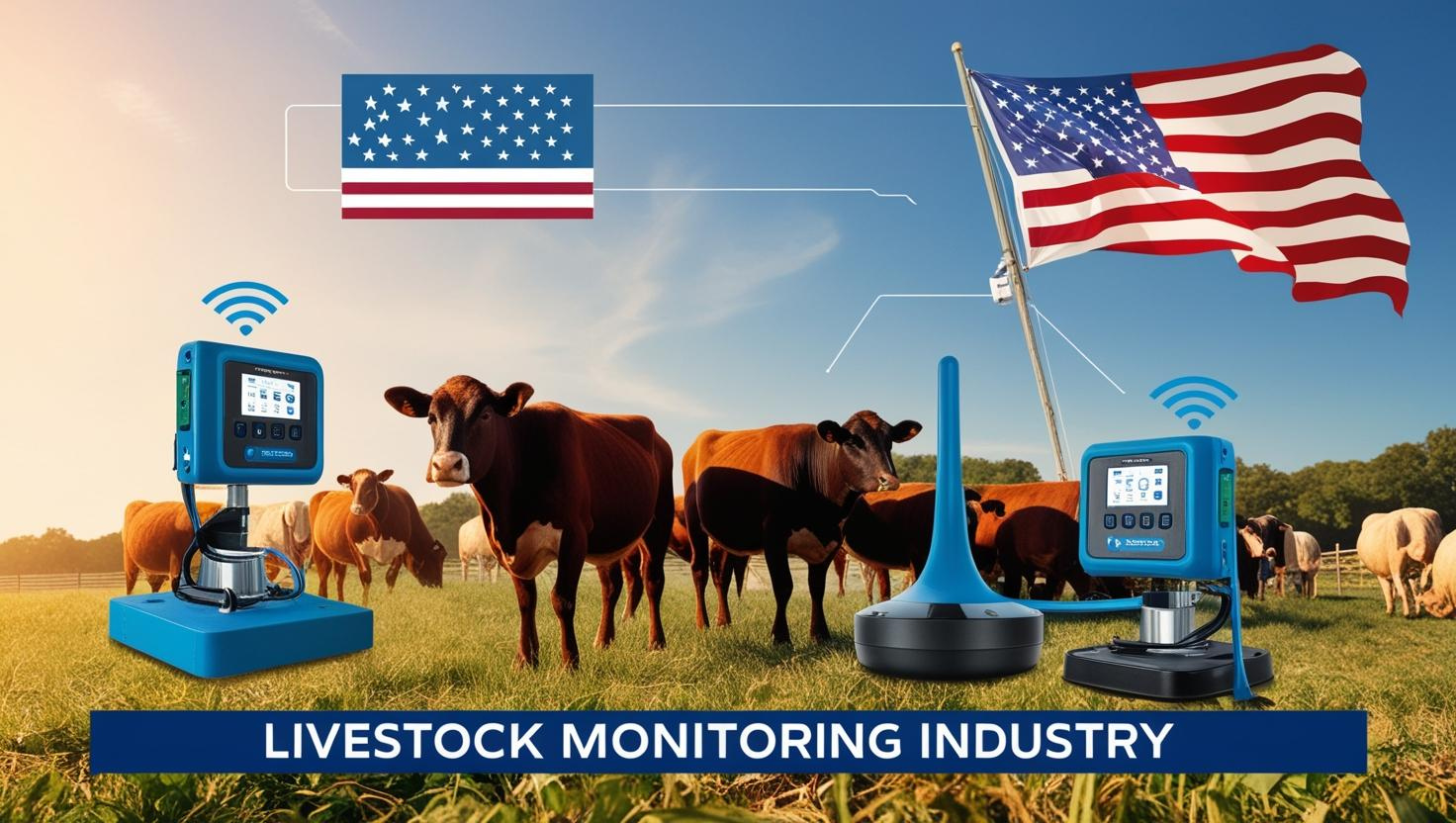The livestock monitoring industry, like many others, faced significant disruption during the era of trade tensions and tariffs, particularly under former President Donald Trump’s administration. With the imposition of tariffs on agricultural imports, businesses within the livestock and farming sector experienced fluctuations in costs, supply chain disruptions, and shifting market dynamics. However, as the dust settles and the market adapts, a new landscape of opportunity is emerging for companies in the livestock monitoring market. The key challenge now is not just recovering but leveraging new trends and technological innovations to drive future growth.
- Embracing Technology and Innovation in Livestock Monitoring
One of the biggest takeaways from the tariff disruptions is the critical role that technology plays in ensuring long-term sustainability and profitability. The livestock monitoring market has seen an accelerated adoption of IoT-based solutions and smart farming technologies. With real-time tracking and health monitoring systems, farmers can manage livestock more efficiently, reducing costs and improving productivity despite external market pressures.
The post-tariff era is characterized by a growing demand for precision farming technologies. Wearables, smart collars, and drones are helping farmers track animal health, behavior, and productivity with unprecedented accuracy. These technologies enable early detection of diseases, monitor feeding habits, and optimize breeding programs, ensuring higher yields and healthier livestock. Companies that invest in these innovative solutions will not only recover from the disruptions caused by tariffs but will also gain a competitive edge as demand for efficient, tech-driven farming increases.
Request US Tariff Impact Analysis Now @ https://www.marketsandmarkets.com/forms/ctaTariffImpact.asp?id=72634532
- Diversification of Product Offerings
The Trump-era tariffs had a ripple effect on global supply chains, and many livestock farmers were forced to rethink their sourcing strategies for animal feed, pharmaceuticals, and other essential products. In response, the livestock monitoring market is diversifying its offerings to meet these evolving needs. Companies are developing all-encompassing solutions that go beyond animal tracking to include feed management, environmental monitoring, and even regulatory compliance.
As livestock farmers face higher input costs due to tariffs, a more comprehensive approach to farming becomes increasingly necessary. Integrated solutions that combine monitoring, analytics, and farm management are gaining traction. This strategy not only helps mitigate the impacts of tariffs but also appeals to farmers looking for all-in-one solutions to optimize both costs and productivity.
- Expanding into Emerging Markets
One of the most exciting opportunities in the post-tariff world is the growing interest in emerging markets. Countries in Asia, Africa, and Latin America are rapidly adopting modern farming practices to increase their agricultural output. With tariffs affecting trade between the U.S. and other nations, there is a significant opportunity for livestock monitoring companies to expand their reach into these developing regions where demand for technological innovation is on the rise.
As these emerging economies move towards modernization and seek sustainable farming practices, livestock monitoring companies have a unique chance to establish themselves as trusted partners. With tariffs on certain imports affecting the availability of traditional farming solutions, the need for more cost-effective, efficient alternatives like smart sensors and data-driven farm management systems will increase.
- Collaborations and Strategic Partnerships
Another effective post-tariff strategy is focusing on collaborations and strategic partnerships. By forming alliances with local players in key markets or teaming up with technology providers, livestock monitoring companies can strengthen their market presence and expand their product offerings.
For instance, collaborating with agricultural technology firms can help livestock monitoring companies gain access to complementary innovations like AI-powered analytics, machine learning algorithms, and cloud-based data storage. These collaborations will create holistic solutions that appeal to a broader range of customers, enabling companies to increase their value proposition and tap into new revenue streams.
- Regulatory Compliance and Sustainability
The ongoing shifts in global trade policies have resulted in increased scrutiny and regulations for the agricultural industry. In many regions, the tariffs placed on livestock products have created additional pressure on farmers to comply with stricter standards. Post-tariff strategies for livestock monitoring companies can therefore include offering solutions that help farmers stay ahead of regulatory requirements while promoting sustainable farming practices.
Smart monitoring systems can support farmers in achieving sustainability goals, such as reducing emissions, minimizing resource usage, and ensuring animal welfare. These solutions help farmers demonstrate compliance with both local and international regulations, while also meeting the increasing consumer demand for ethically sourced and sustainably produced animal products.
- Data-Driven Insights for Improved Decision-Making
The power of data cannot be overstated in the post-tariff livestock monitoring market. By offering advanced data analytics and reporting tools, companies can help farmers make informed decisions that improve both operational efficiency and profitability. For example, data-driven insights into herd behavior and environmental conditions can empower farmers to make real-time adjustments to feed, shelter, and healthcare plans.
As farmers continue to navigate the complexities of post-tariff supply chains, access to reliable data will be crucial. Livestock monitoring systems that provide real-time analytics can help farmers adapt quickly, ensuring that their operations remain profitable despite external disruptions.
Conclusion: A Path Forward Fueled by Innovation and Strategy
The livestock monitoring market, though impacted by the Trump-era tariffs, is now on a trajectory of recovery and growth. By embracing cutting-edge technology, diversifying product offerings, expanding into emerging markets, and fostering strategic partnerships, companies in the sector can turn disruption into opportunity. With the increasing demand for sustainable and efficient farming practices, the livestock monitoring market is poised for significant growth in the post-tariff world, offering a wealth of possibilities for forward-thinking businesses and farmers alike.

